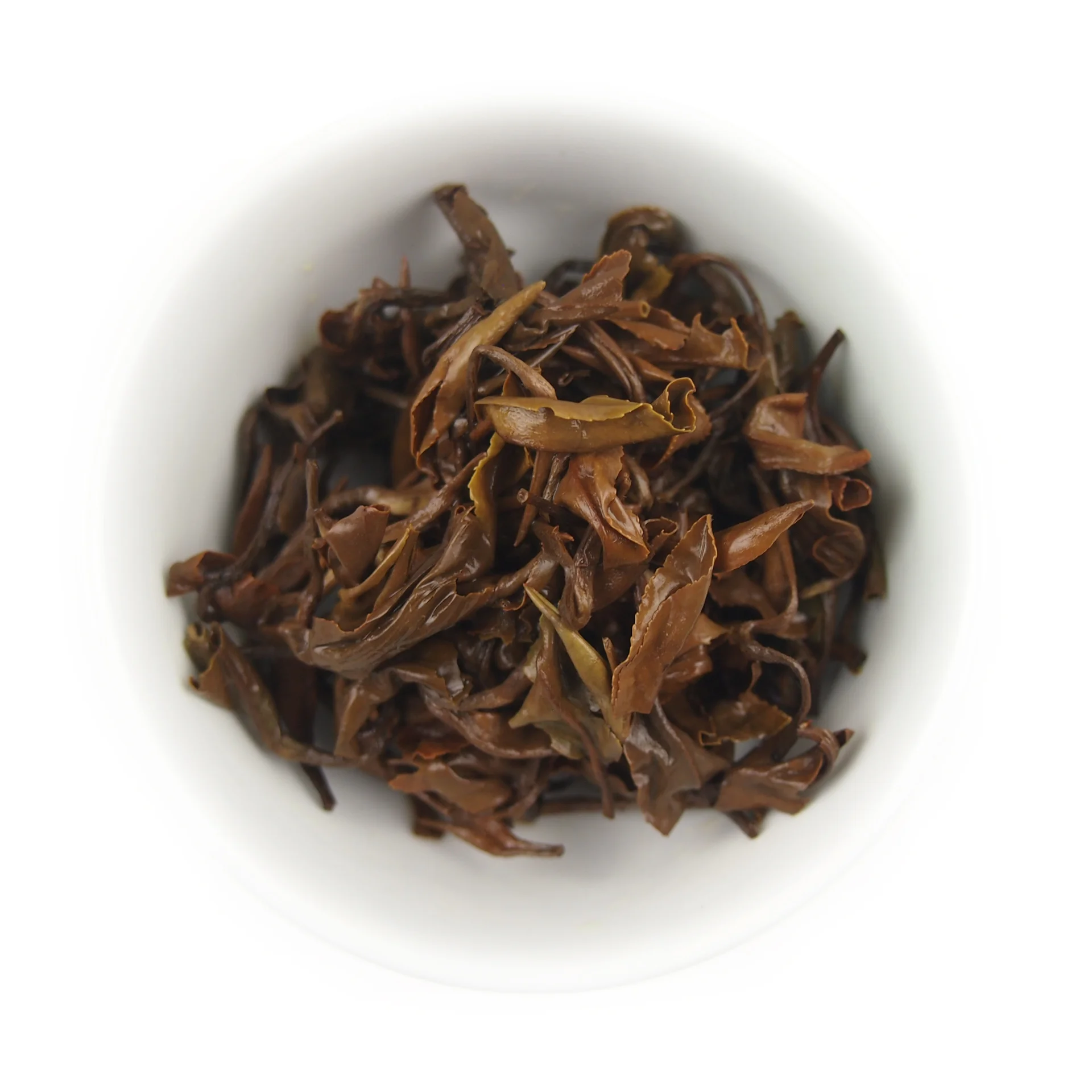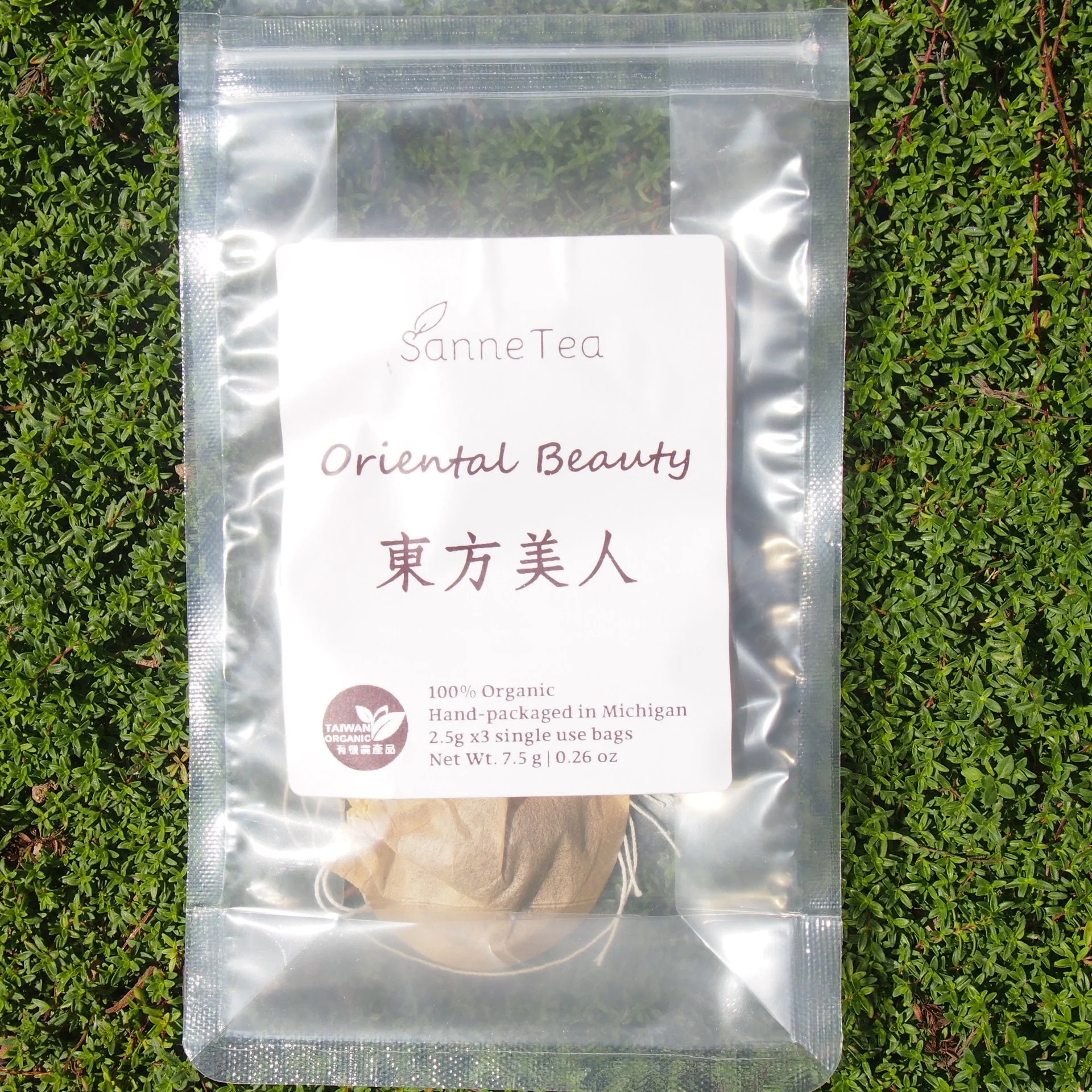Oriental Beauty
Oriental Beauty
Oriental Beauty is also known as Bai Hao (white tips) Oolong, or Champagne Oolong. The beautiful name, many people believe, is from Queen Victoria. When brewed, the leaves generally spread in water, like a graceful lady dancing with gorgeous finery.
To make Oriental Beauty, farmers have to grow tea trees without pesticides, so Jacobiasca formosana, a type of green leafhopper insect, can feed on the leaves, stems, and buds. This leads to the tea plant’s production of monoterpene diol and hotrienol which gives the tea its unique flavor. Tea leaves bitten by the green leafhopper insect lose their green color and appear bronzed or washed out, eventually becoming atrophic and curly. It is why the high quality Oriental Beauty shows five different colors: white, red, yellow, green and brown.
The tea leaves are only harvested and made in summer, when the green leafhopper insects are most active. What makes Oriental Beauty more precious is that the unique sweetness is produced when the leaves only bitten by Jacobiasca formosana. Tea leaves, infested with other insects, like Ectropis oblique and Toxoptera aurantii, won’t produce honey flavor. This uncontrollable eco system makes Oriental Beauty one of the rarest teas in the world.
The tea comes from Cuku, Pinglin Dist, near Feitsui Reservoir area. All tea leaves have to be handpicked to ensure that each leaf has been bitten by Jacobiasca formosana. Because of the difficulty involved in harvesting this tea, a professional tea picker can only harvest 0.7 to 1kgs each day.
This tea has natural ripe fruit and honey flavors with a smooth texture and multiplayer floral finish. When brewed, the tea liquor has a clean and bright golden color. The full-bodied, mellow, and aromatic flavors will bring you ultimate luxury experience.
When ordering 75 grams of Oriental Beauty, the tea will be shipped in its original package, sealed by the farmer.
Origin
Style of Tea: Oriental Beauty (Bai Hao Oolong Tea)
Harvest Date: July, 2024
Oxidation Level: Heavy
Roasting Level: Light
Location: Cuku, Pinglin District, New Taipei City
Picking Style: Hand Picked
Cultivar: Taiwanese No.12
Farm Elevation: 500 meters
Brewing Guidelines
Water Temperature: 176-185 F degrees / 80-85 C degrees
Steep Time: 1st/3 mins, 2nd/5 mins, 3rd/8 mins, adding 3 mins for subsequent infusions
Suggested Serving Size: 6 grams / 200 ml water
The same tea leaves can be steeped 4-5 times.
“On my tongue, it was sweet and woody, and there was also a flavour slipping along the bottom that made me think of birch bark — dry, cool, wispy, papery. The mouthfeel was thick and it coated my tongue, providing a metallic aftertaste and a syrupy sweetness similar to Thompson raisins.”
From Books and Tea
“…The smell of the freshly infused leaves flirts with bitter, but with a delicious orange smell…”
From nomcha
“…The first steep starts out very light, the mouthfeel is smooth and a touch delicate. Tasting notes start with gently spiced wildflower honey and quickly moving into dried apples and white grapes. There is a touch of pear at the finish but mostly this steep is light and all about the grapes and apples. For the aftertaste, oddly enough, is very gentle loam, adding a touch of earthiness to the light tea…”
From Amanda, My Thoughts Are Like Butterflies
“This tea was perfect for an autumn day. The tea leaves when infused look like autumn leaves and it almost has that autumn leaves taste to it. It brews up light with a light mouth feel. There’s a honey sweetness & stone fruit taste that stays with each infusion (I did 3) Very enjoyable! “
From Ubacat, Steepster
“…The initial sip is of the “wow” nature. The taste begins with nectar, hay, and a smooth grape that lingers. Then, it evolves into a crisp apricot tone. Last, it finishes with an intensely sweet honey aftertaste that fills the mouth. This honey tone is as identical to actual honey that I’ve ever tasted. The honey flavor even has the mild tang all too familiar with wild raw honey…”
From Haveteawilltravel, Steepster
About Taiwanese Organic Marks





